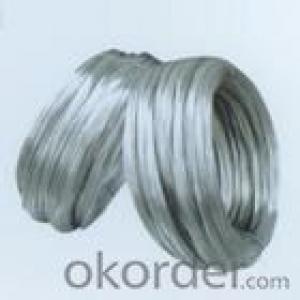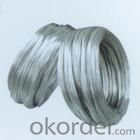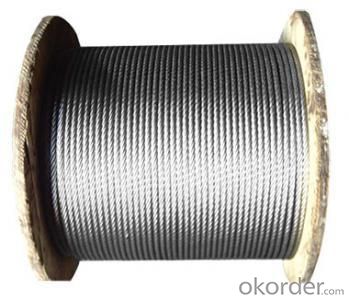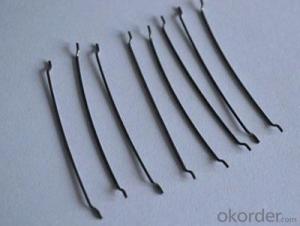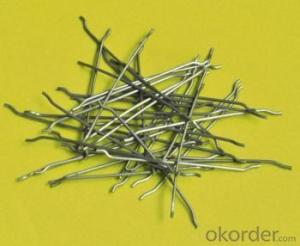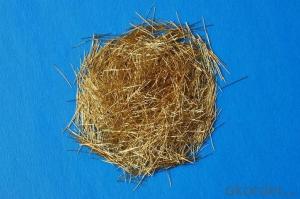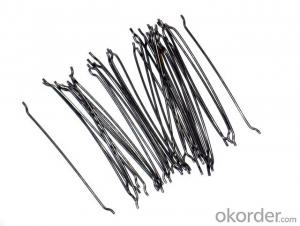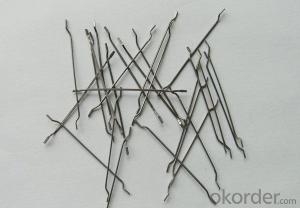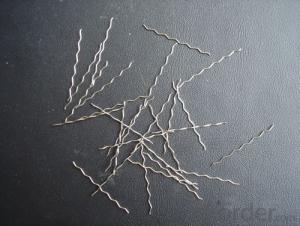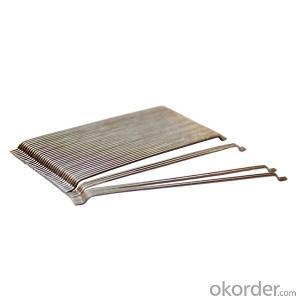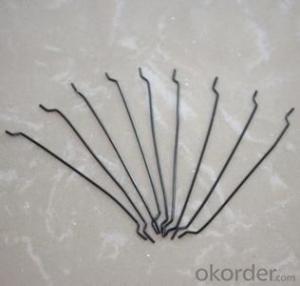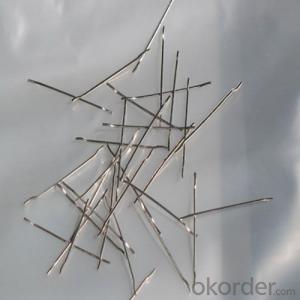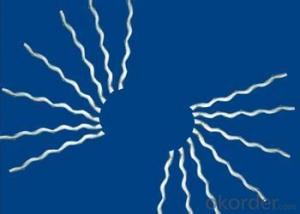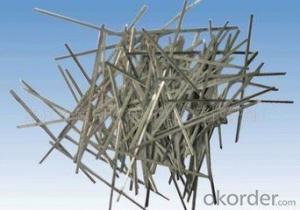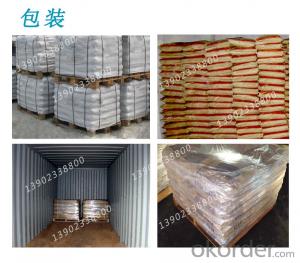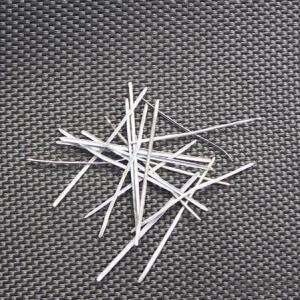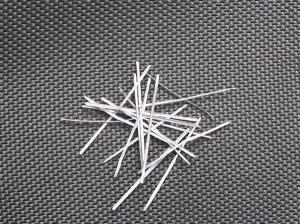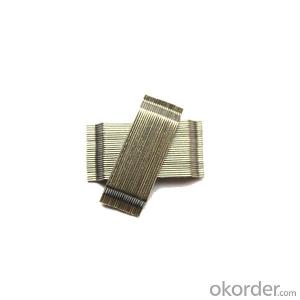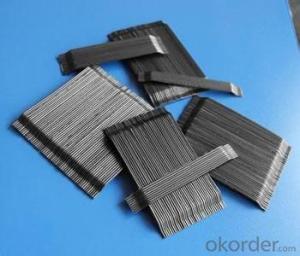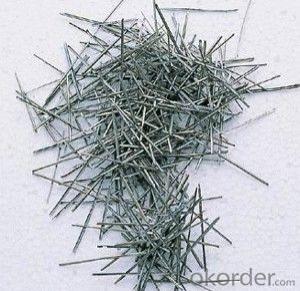Melt Extract Stainless Steel Fiber Ele Gl Wire 0.3mm Swg Gi Wire from CNBM China
- Loading Port:
- Tianjin
- Payment Terms:
- TT OR LC
- Min Order Qty:
- 1 m.t.
- Supply Capability:
- 10000 m.t./month
OKorder Service Pledge
OKorder Financial Service
You Might Also Like
Quick Details
Place of Origin: Tianjin, China (Mainland)
Surface Treatment: Galvanized
Galvanized Technique: Electro Galvanized
Type: Loop Tie Wire
Function: Baling Wire
Wire Gauge: 0.7-6mm
Business Type: Business Type
Raw material: Low carbon steel, Structural Carbon Steel,Q195
Elongation: 10% -12%
Zinc Coating: 10-270g/sqm
Standard: EN,BS,ASTM,GB
Packaging & Delivery
| Packaging Details: | 25kg or 50kg for each coil,According to customer's requirements |
|---|---|
| Delivery Detail: | 15 |
Product Description
| Business Type | Manufacturer | |||
| Wire Type | Zinc coated wire/Galvanized wire | |||
| Usage & Performance | Baling wire,Binding wire.weaving wire mesh, construction, handicrafts, express way fencing mesh, packaging of products, equipment, medical equipment, brushes, cables, | |||
| Wire Gauge | BWG 4-22 Galvanized Wire Diameter: 0.7-6mm | |||
| Zinc-plated | Hot dipped Galvanized or Electro Galvanized | |||
| Raw material | Low carbon steel, Structural Carbon Steel,Q195 | |||
| Tensile strength | >350 MPa | |||
| Elongation | 10% -12% | |||
| Zinc Coating: | 10-270g/sqm Electro Galv. Wire-Zinc coating: 10g-25g/m2, Hot Dipped Galv. Wire-Zinc coating: 40g-70g/m2/200g-270g/m2 | |||
| Standard | EN,BS,ASTM,GB | |||
| Certification | ISO9001:2000, CE, | |||
| Packing | Standard Coil Packing Unit | Weight | 25kg or 50kg for each coil | |
| Inner Dia. (φ/mm) | 200/400 | |||
| Inner Wrappage | Plastic film | |||
| Outside Wrappage | Woven bag or Hessian cloth | |||
| Export Bulk Packing | Export Packing | 500kg or 1,000kg for each coil | ||
| Customized Packing | 5kg to 500kg for each coil | |||
| Bulk Packing | 500kg/ Bulk coil | |||
| Inner and Outside Dia. (φ/mm) | According to customer's requirements | |||
| Wrappage | According to customer's requirements | |||
| Loading Quantity | 20’GP | 20-25 Tonne/Tonnes | ||
| 40’GP | 25-27 Tonne/Tonnes | |||
| 40’HQ | 25-27 Tonne/Tonnes | |||
| MOQ | 1 kg for trial order | |||
| Supply Ability | 10,000 Tonne/Tonnes per Year | |||
| Payment Terms | T/T or L/C at sight | |||
| Delivery Time | Within 15 days after receiving deposit or original L/C at sight | |||
| Remark | Customized order and specific requirements is available. | |||
- Q: Can melt extract stainless steel fiber be used in industrial flooring applications for shotcrete?
- Melt extract stainless steel fiber is a suitable option for shotcrete applications in industrial flooring. Shotcrete is a construction method that involves spraying concrete onto a surface using air pressure, resulting in a fast and efficient way to create a strong and durable floor. By incorporating stainless steel fiber into the shotcrete mix, the overall performance and durability of the flooring system can be enhanced. To produce melt extract stainless steel fiber, stainless steel is melted and then rapidly extracted into fine fibers. These fibers are known for their high tensile strength, resistance to corrosion, and toughness. When added to shotcrete, they contribute to improved crack resistance, impact resistance, and overall durability of the floor. In industrial environments where floors are subjected to heavy loads, impacts, and abrasion, using stainless steel fiber in shotcrete can offer significant advantages. It helps to minimize cracking, enhance resistance to wear and tear, and extend the lifespan of the floor. Moreover, stainless steel fiber can augment the fire resistance of shotcrete flooring, making it appropriate for industrial settings where fire safety is a concern. Overall, melt extract stainless steel fiber is an excellent choice for shotcrete applications in industrial flooring. It provides enhanced performance, durability, and fire resistance, making it a dependable solution for industrial settings that require robust and long-lasting flooring.
- Q: How does melt extract stainless steel fiber enhance the toughness of concrete?
- Melt extract stainless steel fiber enhances the toughness of concrete by improving its resistance to cracking and enhancing its overall durability. The fibers act as reinforcement, distributing the stress throughout the concrete and preventing cracks from forming or spreading. This results in a more resilient and long-lasting concrete structure.
- Q: Does melt extract stainless steel fiber improve the resistance to carbonation in shotcrete?
- Yes, melt extract stainless steel fiber can improve the resistance to carbonation in shotcrete. Carbonation is a process in which carbon dioxide from the atmosphere penetrates into concrete or shotcrete, causing a chemical reaction that reduces the alkalinity of the material. This carbonation process can lead to the corrosion of steel reinforcement within the shotcrete, reducing its structural integrity and durability. By adding melt extract stainless steel fiber to shotcrete, the resistance to carbonation can be enhanced. Stainless steel fibers have a high resistance to corrosion, making them ideal for enhancing the durability of shotcrete in harsh environments. These fibers create a three-dimensional reinforcement network within the shotcrete, increasing its resistance to cracking and minimizing the potential for carbon dioxide penetration. Additionally, the presence of stainless steel fibers can improve the overall mechanical properties of shotcrete, including its tensile strength and toughness. This increased strength and durability can further enhance the resistance to carbonation, as the shotcrete is better able to withstand external factors that may contribute to degradation. It is important to note that while melt extract stainless steel fiber can improve the resistance to carbonation in shotcrete, it is not a standalone solution. Proper concrete mix design, placement techniques, and curing methods are also crucial in maximizing the resistance to carbonation. Nonetheless, the addition of stainless steel fibers is a valuable tool in enhancing the durability and longevity of shotcrete in carbonation-prone environments.
- Q: What is the effect of melt extract stainless steel fiber on the modulus of plasticity of concrete?
- The addition of melt extract stainless steel fiber to concrete has a positive effect on the modulus of plasticity.
- Q: What is the typical dosage of melt extract stainless steel fiber in concrete?
- The dosage of melt extract stainless steel fiber in concrete can vary depending on the specific application and desired characteristics of the concrete. The range for dosage is usually between 0.5% and 2% of the concrete mix volume. This dosage range is typically enough to reinforce the concrete and improve its crack resistance, impact resistance, and durability. It is important to consider project requirements, design considerations, and industry standards or guidelines when determining the specific dosage. It is recommended to consult with a structural engineer or concrete specialist to determine the right dosage for a specific concrete application.
- Q: How does melt extract stainless steel fiber improve the fatigue resistance of concrete?
- Melt extract stainless steel fiber improves the fatigue resistance of concrete by enhancing its strength and durability. The fibers act as reinforcement within the concrete matrix, distributing and dissipating stress more effectively. This reduces the formation and propagation of cracks, increasing the overall fatigue life of the concrete. Additionally, the high tensile strength and corrosion resistance of stainless steel fibers provide long-term structural stability, making the concrete less prone to failure under cyclic loading conditions.
- Q: How does melt extract stainless steel fiber affect the permeability of concrete?
- Melt extract stainless steel fiber improves the permeability of concrete by reducing the size and number of capillary pores, thereby reducing water absorption and increasing its resistance to moisture penetration.
- Q: How does melt extract stainless steel fiber enhance the durability of composite materials?
- Melt extract stainless steel fiber enhances the durability of composite materials by providing reinforcement and increasing their strength. The stainless steel fibers are embedded within the composite matrix, improving its mechanical properties such as tensile strength, toughness, and resistance to cracking or breaking. This added reinforcement helps the composite material withstand external forces, impacts, and wear, ultimately enhancing its overall durability and lifespan.
- Q: Can melt extract stainless steel fiber be used in earthquake retrofitting?
- Yes, melt extract stainless steel fiber can be used in earthquake retrofitting. These fibers are known for their high tensile strength and excellent resistance to corrosion, making them ideal for reinforcing concrete structures. When added to concrete, they enhance its tensile strength and ductility, helping withstand seismic forces and improving the overall performance of the retrofitting process.
- Q: Does melt extract stainless steel fiber improve the impact resistance of concrete?
- The impact resistance of concrete is indeed improved by melt extract stainless steel fiber. Concrete mixtures often incorporate stainless steel fibers in order to enhance their mechanical properties, with a particular focus on impact resistance. These fibers serve as reinforcement within the concrete matrix, thereby increasing its tensile strength and ductility. As a result, when the concrete is subjected to impact loads, the stainless steel fibers play a vital role in distributing the energy throughout the structure. This distribution effectively prevents crack propagation and enhances the concrete's ability to withstand impact forces. In addition, the stainless steel's high melting point and corrosion resistance guarantee the long-term durability of the concrete, rendering it an excellent choice for applications that require significant impact resistance, such as industrial floors, pavements, and structures exposed to heavy loads or dynamic forces.
Send your message to us
Melt Extract Stainless Steel Fiber Ele Gl Wire 0.3mm Swg Gi Wire from CNBM China
- Loading Port:
- Tianjin
- Payment Terms:
- TT OR LC
- Min Order Qty:
- 1 m.t.
- Supply Capability:
- 10000 m.t./month
OKorder Service Pledge
OKorder Financial Service
Similar products
Hot products
Hot Searches
Related keywords
